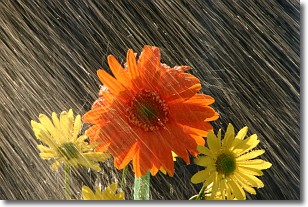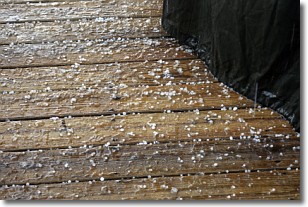Weather Alert in Colorado
Fire Weather Watch issued April 24 at 2:44PM MDT until April 27 at 8:00PM MDT by NWS Grand Junction CO
AREAS AFFECTED: Lower Colorado River; Colorado River Headwaters
DESCRIPTION: The National Weather Service in Grand Junction has issued a Fire Weather Watch for gusty winds, low relative humidity and dry fuels, which is in effect from Sunday afternoon through Sunday evening. A Red Flag Warning remains in effect from noon to 8 PM Friday and a Fire Weather Watch remains in effect Saturday afternoon through Saturday evening. * AFFECTED AREA...In Colorado, Fire Weather Zone 203 Lower Colorado River and Fire Weather Zone 205 Colorado River Headwaters below 7000 feet. * TIMING...For the Red Flag Warning, from noon to 8 PM MDT Friday. For the first Fire Weather Watch, from Saturday afternoon through Saturday evening. For the second Fire Weather Watch, from Sunday afternoon through Sunday evening. * WINDS...For Friday and Saturday, south 15 to 20 mph with gusts to 40 mph. For Sunday south 20 to 30 mph with gusts up to 45 mph. * RELATIVE HUMIDITY...8 to 13 percent. * IMPACTS...Fires will catch and spread quickly. Exercise extreme caution with any outdoor burning.
INSTRUCTION: A Red Flag Warning means that critical fire weather conditions are either occurring now, or will shortly. A combination of strong winds, low relative humidity, and warm temperatures can contribute to extreme fire behavior. A Fire Weather Watch means that critical fire weather conditions are forecast to occur. Listen for later forecasts and possible Red Flag Warnings.
Want more detail? Get the Complete 7 Day and Night Detailed Forecast!
Current U.S. National Radar--Current
The Current National Weather Radar is shown below with a UTC Time (subtract 5 hours from UTC to get Eastern Time).

National Weather Forecast--Current
The Current National Weather Forecast and National Weather Map are shown below.

National Weather Forecast for Tomorrow
Tomorrow National Weather Forecast and Tomorrow National Weather Map are show below.

North America Water Vapor (Moisture)
This map shows recent moisture content over North America. Bright and colored areas show high moisture (ie, clouds); brown indicates very little moisture present; black indicates no moisture.

Weather Topic: What is Rain?
Home - Education - Precipitation - Rain
 Next Topic: Shelf Clouds
Next Topic: Shelf Clouds
Precipitation in the form of water droplets is called rain.
Rain generally has a tendency to fall with less intensity over a greater period
of time, and when rainfall is more severe it is usually less sustained.
Rain is the most common form of precipitation and happens with greater frequency
depending on the season and regional influences. Cities have been shown to have
an observable effect on rainfall, due to an effect called the urban heat island.
Compared to upwind, monthly rainfall between twenty and forty miles downwind of
cities is 30% greater.
Next Topic: Shelf Clouds
Weather Topic: What is Sleet?
Home - Education - Precipitation - Sleet
 Next Topic: Snow
Next Topic: Snow
Sleet is a form of precipitation in which small ice pellets are the primary
components. These ice pellets are smaller and more translucent than hailstones,
and harder than graupel. Sleet is caused by specific atmospheric conditions and
therefore typically doesn't last for extended periods of time.
The condition which leads to sleet formation requires a warmer body of air to be
wedged in between two sub-freezing bodies of air. When snow falls through a warmer
layer of air it melts, and as it falls through the next sub-freezing body of air
it freezes again, forming ice pellets known as sleet. In some cases, water
droplets don't have time to freeze before reaching the surface and the result is
freezing rain.
Next Topic: Snow
Current conditions powered by WeatherAPI.com




